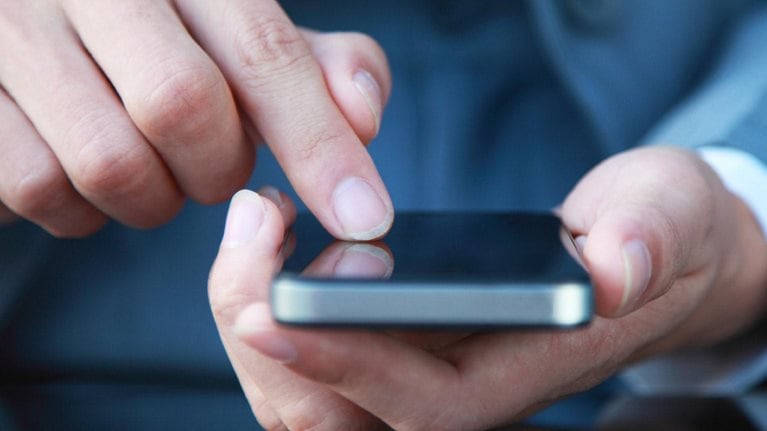Do you really know what your customers want?
That’s never been an easy question. Yet it’s even more difficult to answer today, when companies such as Airbnb, Amazon, Google, and Uber11. Harvard Business Review, “The future of corporate IT looks a lot like google,” blog entry by Jeanne G. Harris, Allan E. Alter, and Kelly L Dempski, July 31, 2013, hbr.org. have shaken up the competitive landscape by raising the bar on consumer expectations. They don’t just provide useful products and services; they create experiences that people love. They do it by applying a user-centered perspective that unearths opportunities to create products and services that delight and empower customers.
This design approach is forcing business leaders to reconsider their offerings. Within that competitive challenge, however, lies a tremendous opportunity to “reimagine” the very foundations of a business—from transforming how it engages with customers to becoming an agile, innovative organization.
What a user-centered approach enables companies to do is to take insights into the consumer decision journey and the marketplace and convert them into products and services customers actually want.
This capability is particularly important given the billions of dollars being invested in advanced analytics. The insights derived from data and analytics are wasted unless they can be turned into well-designed, meaningful experiences. In short, great design turns insights into impact.
While many C-level executives increasingly know that design should play a central role in business strategy, they don’t necessarily know how to incorporate it across their organization. It’s not as simple as bringing in a few design generalists—commitment to design takes serious time and effort. So how do you bring an end-user perspective and directive to the C-suite while moving quickly and strategically?
Start with the heart. Design thinking starts with a deep understanding of consumers’ emotions and desires. You’re designing for a delightful user experience, and that can only come from understanding the interaction in various contexts between emotions, intentions, and behavior. It requires developing insights about people’s technology choices, how they interact with their networks, and when they engage with technology. What new behaviors are emerging or can be enabled by these insights?
The highest-fidelity way to understand customers is through direct observation and immersion in their decision journey to understand both the what and the why through ethnographic research, shadowing, interviews, and other techniques. These findings should bring to the surface unmet needs and problems to solve—that’s ultimately what you should be designing for. Virgin America, for example, has focused on designing emotional connections through delightful customer experiences as a way to differentiate itself in a commoditized market. When establishing the airline, the company started by asking travelers what bothered them most about the travel experience and then focused on addressing those issues.22. Phil Johnson, "An airline people love," Ascend, Number 1, 2014, ascendforairlines.com. Leaders spend lots of time in a scale-model plane to get a realistic sense of the customer experience and think of new ways to create comfort and entertainment. Whether it is their website, the music playing at check-in, the LED lighting in the aircraft, or the unique in-seat ordering system, Virgin America has designed for a unique and memorable experience. For the past two years, it has come in first in the annual Airline Quality Rating report.33. Adam Levine-Weinberg, “Virgin America IPO: Is this the next great airline stock?,” The Motley Fool, August 2014, fool.com.
Know who and what are shaping expectations. It’s simply not enough to offer a better experience than your direct competitor; you need to consider your “experiential” competitors. When customers like what disruptors are delivering, that’s what they want and expect from every business. Some of the dominant trends shaping consumer expectations today are transparency (for example, Uber tells customers how many minutes until the driver arrives), real-time relevance (Google Now44. Whitson Gordon, “Top 10 awesome features of Google now,” Lifehacker, May 17, 2014, lifehacker.com. tells you at 5 PM how long your commute home will be), and connectedness (the Nest thermostat intelligently manages your home’s climate). Having a deep understanding of your customers’ decision journeys and the experiences likely shaping their expectations should be top of mind as you create the environment and conditions for a delightful user experience.
Test, test, and test some more. The design process should be hyperiterative, involving constant, rapid, real-time tweaking based on actual customer behavior along the decision journey. Users should be a part of the design process from the very beginning to help validate concepts and refine final direction. Your team needs to be open to experimenting and taking risks and then quickly learning and iterating. That approach is critical to both delivering rapid results and sustaining growth over time. It’s in this way that testing becomes more than a finite step in the process; it becomes an ongoing way of thinking. Software company Intuit, for example, put a five-person team together to focus on making it easy for people with simple tax returns to file via mobile device. They initially released SnapTax on a limited basis, adjusted it based on user feedback, then released it more broadly. It now enjoys top ratings and download rankings.
Remember that dollars make a lot of sense. We believe that to address questions around customer experience effectively, you have to run a design-led stream in tandem with an analytical stream. The former provides you options that meet a customer need, while the latter defines and refines a business need. Defining the business need is a core and critical input into any design process. These two streams will often come into conflict—focusing on “delighting” customers may not be enough in itself to create a viable or sustainable business. Resolving that conflict is all about creating and analyzing scenarios that try to balance customer needs and business needs. Quantifying opportunities along the customer decision journey will also help prioritize where to focus efforts and provide a benchmark for results down the road.
In the new competitive marketplace, designing “usable” is just table stakes. Customers now expect products and services to be not only usable but also useful and desirable.


